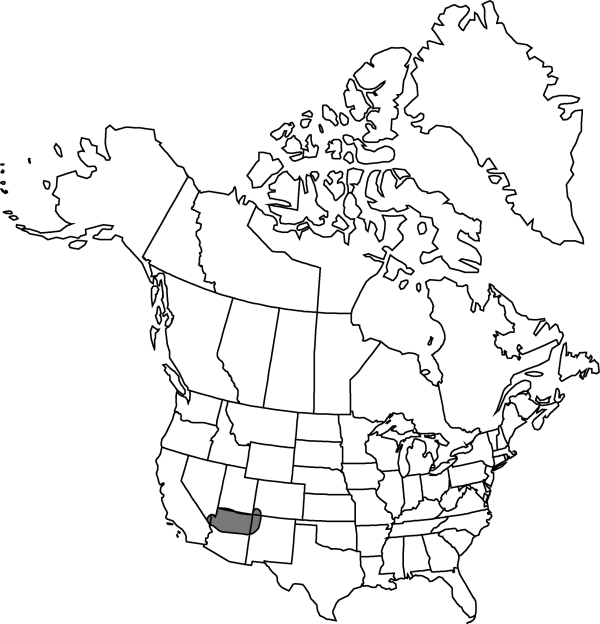Difference between revisions of "Cylindropuntia whipplei"
in C. Backeberg and F. M. Knuth, Kaktus-ABC, 124. 1935.
FNA>Volume Importer |
imported>Volume Importer |
||
| (3 intermediate revisions by 2 users not shown) | |||
| Line 1: | Line 1: | ||
{{Treatment/ID | {{Treatment/ID | ||
|accepted_name=Cylindropuntia whipplei | |accepted_name=Cylindropuntia whipplei | ||
| − | |accepted_authority=(Engelmann & J. M. Bigelow) | + | |accepted_authority=(Engelmann & J. M. Bigelow) F. M. Knuth |
|publications={{Treatment/Publication | |publications={{Treatment/Publication | ||
|title=in C. Backeberg and F. M. Knuth, Kaktus-ABC, | |title=in C. Backeberg and F. M. Knuth, Kaktus-ABC, | ||
| Line 8: | Line 8: | ||
}} | }} | ||
|common_names=Whipple cholla | |common_names=Whipple cholla | ||
| + | |special_status={{Treatment/ID/Special_status | ||
| + | |code=E | ||
| + | |label=Endemic | ||
| + | }} | ||
|basionyms={{Treatment/ID/Basionym | |basionyms={{Treatment/ID/Basionym | ||
|name=Opuntia whipplei | |name=Opuntia whipplei | ||
|authority=Engelmann & J. M. Bigelow | |authority=Engelmann & J. M. Bigelow | ||
| + | |rank=species | ||
|publication_title=Proc. Amer. Acad. Arts | |publication_title=Proc. Amer. Acad. Arts | ||
|publication_place=3: 307. 1856 | |publication_place=3: 307. 1856 | ||
| Line 17: | Line 22: | ||
|name=Cylindropuntia hualpaensis | |name=Cylindropuntia hualpaensis | ||
|authority=Backeberg | |authority=Backeberg | ||
| + | |rank=species | ||
}} {{Treatment/ID/Synonym | }} {{Treatment/ID/Synonym | ||
|name=Cylindropuntia whipplei var. enodis | |name=Cylindropuntia whipplei var. enodis | ||
|authority=(Peebles) Backeberg | |authority=(Peebles) Backeberg | ||
| + | |rank=variety | ||
}} {{Treatment/ID/Synonym | }} {{Treatment/ID/Synonym | ||
|name=Opuntia whipplei var. enodis | |name=Opuntia whipplei var. enodis | ||
|authority=Peebles | |authority=Peebles | ||
| + | |rank=variety | ||
}} {{Treatment/ID/Synonym | }} {{Treatment/ID/Synonym | ||
|name=Opuntia whipplei var. laevior | |name=Opuntia whipplei var. laevior | ||
|authority=Engelmann | |authority=Engelmann | ||
| + | |rank=variety | ||
}} | }} | ||
|hierarchy=Cactaceae;Cactaceae subfam. Opuntioideae;Cylindropuntia;Cylindropuntia whipplei | |hierarchy=Cactaceae;Cactaceae subfam. Opuntioideae;Cylindropuntia;Cylindropuntia whipplei | ||
| Line 50: | Line 59: | ||
-->{{#Taxon: | -->{{#Taxon: | ||
name=Cylindropuntia whipplei | name=Cylindropuntia whipplei | ||
| − | + | |authority=(Engelmann & J. M. Bigelow) F. M. Knuth | |
| − | |authority=(Engelmann & J. M. Bigelow) | ||
|rank=species | |rank=species | ||
|parent rank=genus | |parent rank=genus | ||
| Line 64: | Line 72: | ||
|publication title=in C. Backeberg and F. M. Knuth, Kaktus-ABC, | |publication title=in C. Backeberg and F. M. Knuth, Kaktus-ABC, | ||
|publication year=1935 | |publication year=1935 | ||
| − | |special status= | + | |special status=Endemic |
| − | |source xml=https:// | + | |source xml=https://bitbucket.org/aafc-mbb/fna-data-curation/src/2e0870ddd59836b60bcf96646a41e87ea5a5943a/coarse_grained_fna_xml/V4/V4_210.xml |
|subfamily=Cactaceae subfam. Opuntioideae | |subfamily=Cactaceae subfam. Opuntioideae | ||
|genus=Cylindropuntia | |genus=Cylindropuntia | ||
Latest revision as of 22:57, 5 November 2020
Trees or shrubs, low to upright, sparingly to densely branched, some almost matlike in Arizona, 0.3–0.6(–1.5) m; branchlets whorled to subwhorled. Stem segments firmly attached, green, 3–9(–15) × 0.5–1.5(–2.2) cm; tubercles prominent, short, 0.5–1 cm; areoles oval to obdeltate, 2–6 × 1.5–4 mm; wool pale yellow to white, aging gray. Spines (1–)3–8(–10) spines per areole, in all but basalmost areoles, best developed toward apex, interlacing with spines of adjacent areoles, whitish or pale yellow, pale red-brown, sometimes tipped yellow, of 2 kinds; radial spines slender, flattened basally, deflexed, 5–8 mm, surrounding central spines; central spines usually 4(–6), spreading into a cross, stout, subterete, 2–3.4(–4.5) cm; also 0–2 bristlelike spines; sheaths whitish to pale yellow (rarely golden) throughout or tipped yellow to golden. Glochids in adaxial tuft, yellow, 1–3 mm. Flowers: inner tepals yellow to green-yellow, spatulate, 15–25(–30) mm, apiculate; filaments yellowish or yellow-green; anthers yellow; style white to yellowish; stigma lobes whitish, yellowish, or pale green (rarely pink tinged). Fruits rarely proliferating, yellow to greenish yellow, broadly cylindric to subspheric, 18–30(–35) × 15–22(–32) mm, fleshy, tuberculate, spineless; tubercles subequal or distalmost longest, usually prominent; umbilicus 7–8 mm deep; areoles 36–62. Seeds pale yellow, subcircular to slightly angular in outline, flattened to warped, 3–3.5 × 2.5–3.5 mm, sides smooth or with 1–3 depressions; girdle smooth. 2n = 22, 44.
Phenology: Flowering late spring–early summer (May–Jul).
Habitat: Desert and plains grasslands, juniper woodlands, oak, pinyon, or pine forests, sagebrush
Elevation: 900-2300 m
Distribution

Ariz., Colo., Nev., N.Mex., Utah.
Discussion
Cylindropuntia whipplei hybridizes with C. acanthocarpa in central Arizona; the hybrids [= C. ×congesta (Griffiths) F. M. Knuth (as species) (D. J. Pinkava 1999)] are compact shrubs with long-tuberculate stem segments 8–12 mm thick, bearing 0–4 erect or deflexed spines per areole, and tuberculate, green to yellowish fruits occasionally bearing one to few spines, and have chromosome number of 2n = 22. In areas of Arizona, Nevada, and Utah, C. whipplei hybridizes with C. echinocarpa, particularly with the low, compact form of C. echinocarpa; the hybrids [= C. ×multigeniculata (Clokey) Backeberg] have spineless to nearly spineless fruits, numerous intergrading spines per stem areole that are not dimorphic, and chromosome number of 2n = 22. Hybrids between C. whipplei and C. imbricata [= C. ×viridiflora (Britton & Rose) F. M. Knuth], which are found in scattered localities in northern New Mexico and northeastern Arizona, have a low, bushy habit, ripe cantaloupe-colored inner tepals, an irregular, monomorphic spine pattern, and a chromosome number of 2n = 22. Cylindropuntia ×media P. V. Heath, from the base of Wolf Creek Pass, Colorado (G. Arp 1973), reportedly has the same putative parentage as the older name C. ×viridiflora; further study of its parentage is warranted. Cylindropuntia whipplei also hybridizes with C. leptocaulis.
Selected References
None.